I desperately wanted to do a piece on Qinghai food in the area, given the news recently; I figured they may have relatives back home to support, but unfortunately Qinghai is not renowned for its food; not a single place could I find that sells niangpi (dough cakes) or caterpillar fungus (ranked with shark's fin and bird's nest as one of the most expensive Chinese foods on the market).
Instead, this week let's introduce the food of eastern China, of Shanghai and its surrounding provinces. While there are only a few places in the county that sell it, the food is becoming more popular.
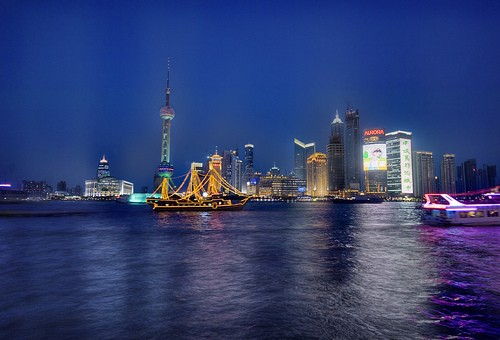
]
The food served at “Shanghainese” restaurants in California tends to be a hybrid: Shanghai cuisine itself, with strong borrowings from the neighboring provinces, Jiangsu and Zhejiang. Certain foods are identifiably Shanghainese; others are more generally Eastern Chinese.
Eastern Chinese food tends to be much sweeter than other types, and not especially spicy. Long-braised meats are the rule, and subtle seasoning. Zhejiang is famous for its black vinegar, which is a sweet spirit similar to balsamic vinegar, and sweet and sour dishes are common here (though they actually contain a decent measure of sour, unlike the sticky red garbage sold as sweet and sour in Chinese-American places).
Appetizers
Shanghai is nearly as famous for its appetizers and dumplings as Guangzhou or Hong Kong; while dim sum is not a tradition in Shanghai, the dumplings certainly are. Two of the most famous appetizers are lion's head meatballs (狮子头, shi zi tou) and potstickers (锅贴). While most people know what potstickers are (meat-filled dumplings that are steamed or boiled, then fried in an unoiled pot until they stick, at which point they're peeled off), lion's heads require some explanation.
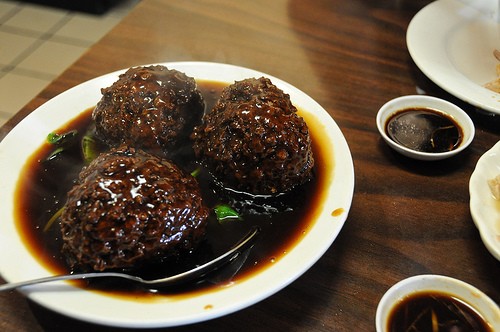
These are large meatballs made of fatty pork and usually shredded bamboo shoots or water chestnuts (both of which are extremely common vegetables in eastern China). The way they are ground together causes the meatball to look “shaggy”, hence the name. Some places will serve them simply steamed (百烧狮子头, bai shao shi zi tou–“white cooked” lion's head), but the majority will serve them cooked with soy sauce and sugar (紅燒狮子头, hong shao shi zi tou–“red cooked” lion's head: see the part about red cooking below).
Soup Dumplings
The most famous food (in the West, anyway) to come out of Shanghai, these dumplings seem to defy physics. They are tender-skinned dumplings filled with pork, crab or both. You dip them in soy sauce that has been poured over slivered ginger and eat them: soup rushes into your mouth. Not to peek behind the magician's robe here, but the way they make them is by taking very thick broth and cooling it so it gels; the gel is packed into the wrapper with the meat. When the dumplings are cooked, the gel melts to form soup.
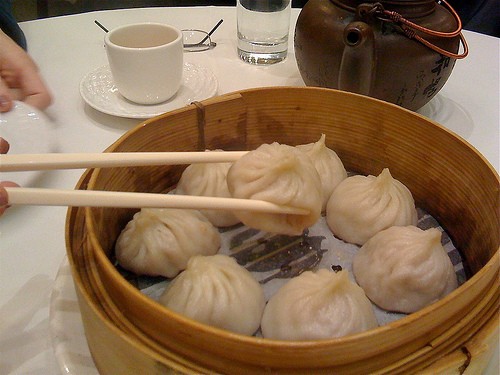
When the dumplings are steamed, they are called xiao long bao (小籠包); when they are pan-fried on one side, they are called sheng jian bao (生煎包).
Red Cooking
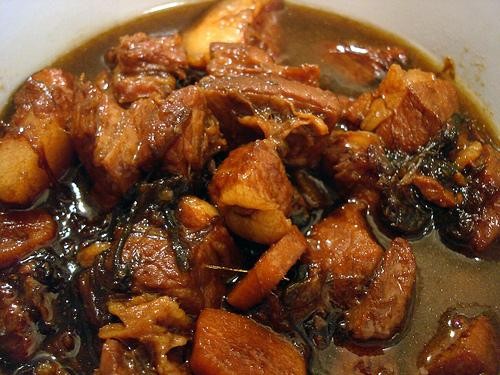
“Red cooking” (紅燒) is a method of cooking meats and tofu. A sauce is made from sugar or caramel, soy sauce and spices such as star anise, cardamom or cinnamon, and the meat is cooked in sauce; a small portion is taken and used to create a thick glaze. The remainder is traditionally returned to the pot. As the sauce is used and re-used, it takes on a rich, meaty quality. If you see the word 滷 (lu) used in place of 紅燒 (hong shao), this is a signal that the sauce has been used enough times to be of an impossible richness. While red-cooked pork is delicious, red-cooked tofu is as well. When pork spare ribs are cooked in this or a similar sauce, they are called Wu Xi spare ribs (
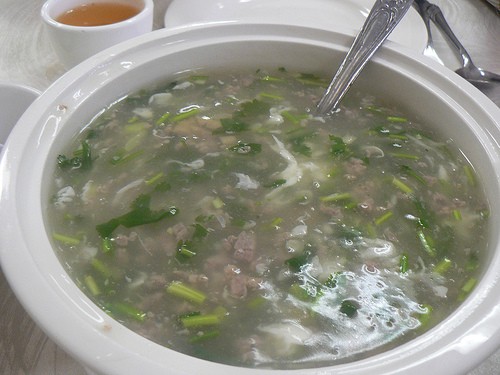
West Lake (xi hu in Mandarin) is a famous lake in Hangzhou, the capital of Zhejiang province, about 40 miles from Shanghai. While best known for the freshwater hairy crabs pulled from its depths, crustaceans which fetch insane prices when sold in the markets and restaurants of Shanghai, Beijing and Hong Kong, there are two famous dishes associated with the lake: fish cooked in vinegar (
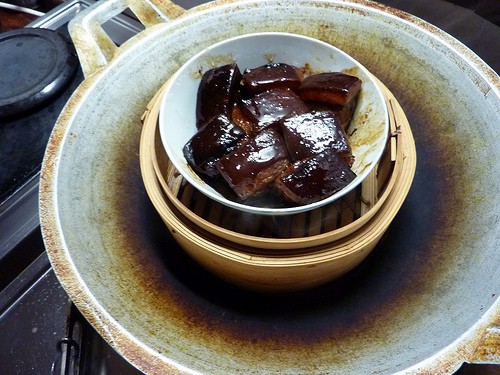
Dong po pork

While rice is extremely common in eastern China, one of the specialities of the region is Chinese New Year's cakes, or nian gao (年糕). Served all year, these are long poles of pressed rice that are cut on the bias (so they look like ovoid coins) and stir-fried with meat or vegetables, especially Napa cabbage. You may see them on menus as 炒年糕; the first character, chao, means stir-fried.
Where to get it?
There are only a few places that sell this sort of food in OC; Chef Chen (5408B Walnut, Irvine), 3-6-9 (613 N. Euclid, Anaheim) and a couple of dishes on the end of the menu at Chu's Wok Inn (13053 Chapman, Orange). Since the food tends to be sweet and reasonably free of challenging ingredients for Americans, Eastern Chinese cuisine stands to grow considerably in popularity as more lao wai discover it.

